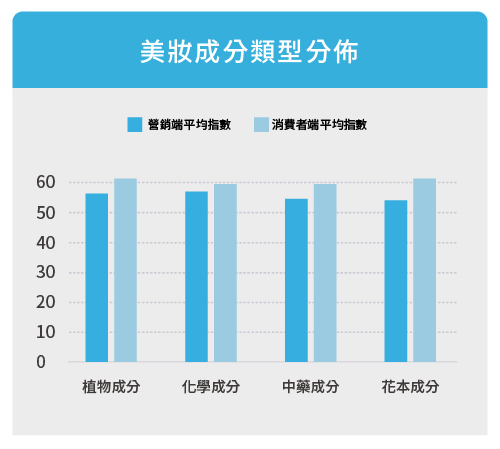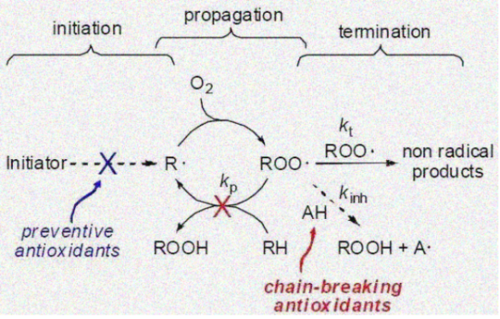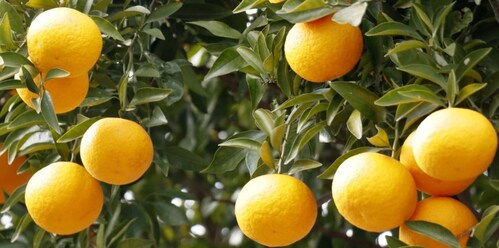According to statistics, the market share of anti-aging cosmetics has reached 23%, becoming the largest category.
With the increasing awareness of anti-aging, urban women are gradually advancing towards anti-aging behaviors such as rejuvenation. Compared to the most commonly used anti-aging skincare methods, over 72% of respondents prefer the anti-aging effect of "antioxidation," and they are also choosing plant-based ingredients for their safety.
For more details on essential oils and anti-aging, please see - Essential Oils and Antioxidation: The Best Choice in the Sea of Beauty Product Efficacy.
【Consumers' New Ingredient Choice】
With the continuous upgrade of the beauty market and the constant iteration of effective products, consumers have become more mature. In terms of product ingredients, consumers have shifted from being "followers" to becoming diligent researchers, studying and understanding product ingredients, and then selecting suitable products based on their own skin conditions.
According to surveys and statistics, consumers generally tend to choose safer plant-based ingredients in beauty products.

【Advantages of Plant Extracted Essential Oil for Antioxidation】
In comparison to commonly known antioxidants such as vitamins, minerals, anthocyanins, resveratrol, carotenoids, and other chemically extracted compounds, plant extracted essential oils possess three unique advantages:
1、Powerful Antioxidant Effects
Free Radical Elimination: Phenolic components present in plant essential oils exhibit high reactivity towards peroxide free radicals, transferring lively hydrogen atoms to free radicals, thereby converting them into less active substances and eliminating them.

Transition metals such as Fe and Cu act as catalysts in many free radical production processes. Certain phenolic substances in plant essential oils contain two phenolic hydroxyl groups that can combine with these transition metals, forming relatively stable complexes and preventing metal-induced free radical generation.
2、Gentle Nourishing Power
Essential oils extracted from natural plants, after scientific formulation, not only have the ability to prevent infectious diseases but also combat bacteria, viruses, fungi, prevent inflammation, alleviate spasms, promote cellular metabolism and regeneration. They can also act on our respiratory system, circulatory system, skin system, and immune system.
Common examples:
Rose Essential Oil:Anti-wrinkle and moisturizing properties, reduces fine lines, replenishes estrogen, regulates endocrine system, and exhibits miraculous effects on menstrual disorders, dysmenorrhea, frigidity, and sexual dysfunction.
Jasmine Essential Oil:Conditions dry, aging, and sensitive skin, fades scars and stretch marks. Soothes nerves and has aphrodisiac effects. Relieves menstrual pain, promotes mammary gland secretion, and enhances breast fullness.
Lavender essential Oil:Possesses comprehensive hair care and cleansing effects, promotes cell regeneration, and balances sebum secretion. Additionally, it calms the nerves, relieves nervous tension, and provides a tranquil fragrance. A small amount used each time can promote sleep and bring about a beautiful mind and body during your nights.
3、Excellent Penetration Power
Deep Antioxidation: Essential oils exhibit lipophilic properties, easily dissolving in oils. The relatively short molecular chains of essential oils enable them to penetrate the skin easily, entering the body through the abundant capillaries beneath the subcutaneous fat layer.
【Common Single Essential Oils with Antioxidant Effects】
〖Lemon〗

Common Name: Lemon
Latin Name: Citrus limon
Major Origin: Italy
Plant Family: Rutaceae, Citrus genus
Plant Scent: Citrus scent, refreshing and fresh
Extraction Source: Fruit peel
Extraction Method: Cold pressing
Lemon essential oil is derived from Italy. It is a volatile oily liquid extracted from the lemon fruit peel through cold pressing. It is rich in components such as dl-limonene, γ-terpinene, α-pinene, E-citral, and has excellent antioxidant properties. It also has effects such as refreshing, antimicrobial, lowering blood lipid levels, and whitening. [1][5]
The phenolic compounds, terpenes, and alcohol compounds in volatile plant essential oils can block the free radical chain of oxidation reactions to some extent, and can also eliminate DPPH free radicals. For example, the non-conjugated dienes contained in gamma-terpinene can directly eliminate DPPH free radicals.[6]
〖Orange〗

Common Name: Orange
Latin Name: Citrus sinensis
Important Production Area: Italy
Plant Family: Rutaceae, Citrus genus
Plant Odor: Fresh and sweet orange scent
Extraction Part: Fruit peel
Extraction Method: Cold pressing
Sweet orange essential oil is produced in Italy. The fruit peel of sweet orange is extracted through cold pressing, resulting in an oil that is rich in 1.02% limonene, 3.58% linalool, and 92.60% citral. It possesses certain antioxidant properties and can help moisturize, hydrate, and whiten the skin. [2][3][4]
〖Mandarin Red〗

Common Name: Mandarin Red
Scientific Name: Citrus reticulata
Major Origin: Italy
Plant Family: Rutaceae, Citrus genus
Plant Aroma: Sweet and refreshing aroma of mandarin orange
Extraction Part: Peel
Extraction Method: Cold-pressing
Mandarin red essential oil is produced in Italy and is obtained through the cold-pressing method. It is rich in compounds such as limonene (86.53%), linalool (6.41%), terpinolene (2.11%), and γ-terpinene (1.30%). Mandarin red essential oil exhibits strong antioxidant capabilities and is known for its ability to smooth skin wrinkles and alleviate stress. [2][5]
Mandarin red oil shows excellent removal effects on ABTS+▪ and DPPH▪, with a mass concentration (IC25) of 1.481 g/L and 24.824 g/L, respectively, when the removal rate is 25%. Limonene exhibits the best removal effect on O₂﹣▪, with a removal rate of 32.86% at a concentration of 0.8 g/L. [2]
